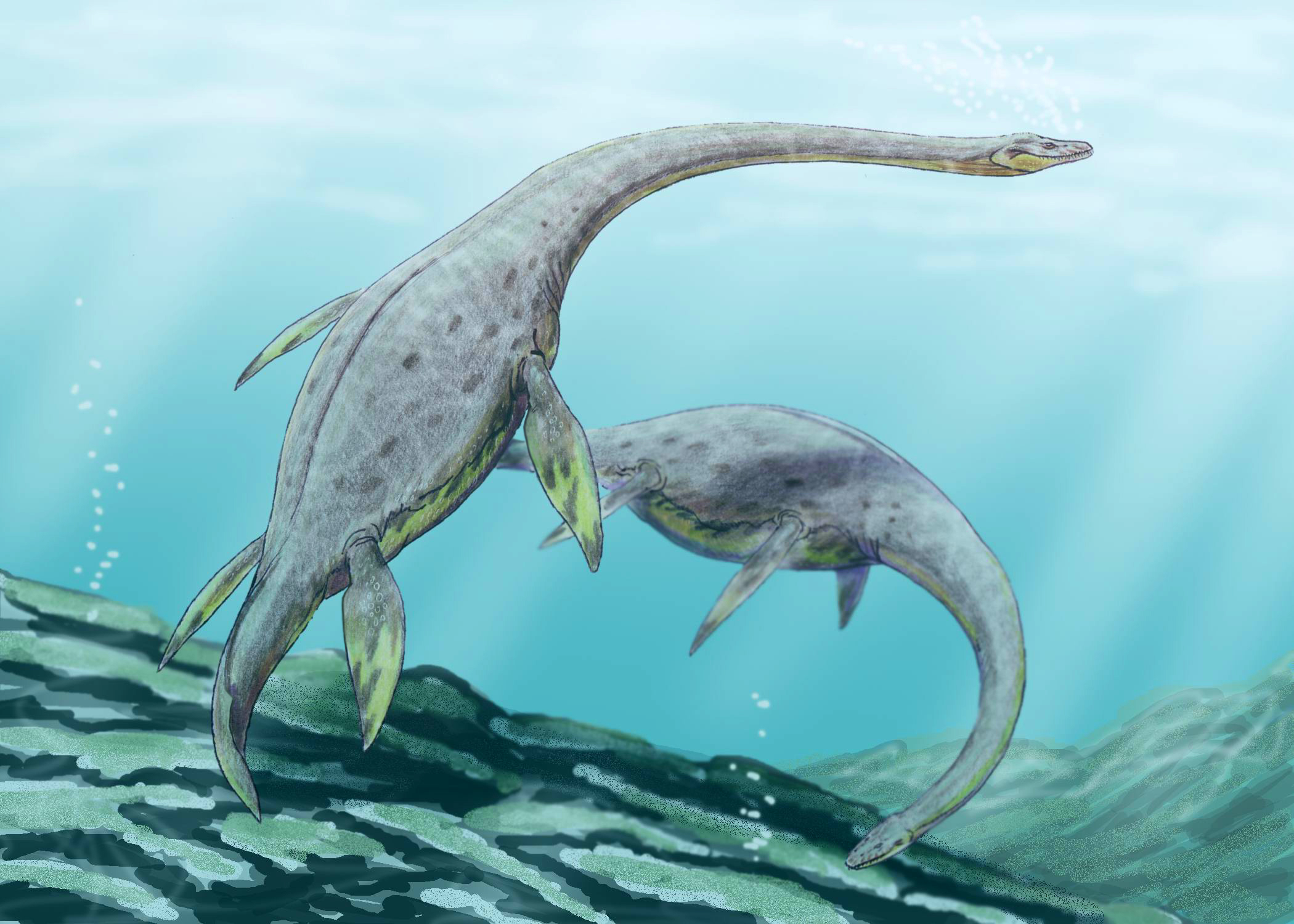Cryptocleididae on:
[Wikipedia]
[Google]
[Amazon]
 Cryptoclididae is a
Cryptoclididae is a
palaeos.com
Jurassic plesiosaurs Cretaceous plesiosaurs Callovian first appearances Late Cretaceous extinctions Sauropterygian families {{Jurassic-reptile-stub
 Cryptoclididae is a
Cryptoclididae is a family
Family (from ) is a Social group, group of people related either by consanguinity (by recognized birth) or Affinity (law), affinity (by marriage or other relationship). It forms the basis for social order. Ideally, families offer predictabili ...
of medium-sized plesiosaur
The Plesiosauria or plesiosaurs are an Order (biology), order or clade of extinct Mesozoic marine reptiles, belonging to the Sauropterygia.
Plesiosaurs first appeared in the latest Triassic Period (geology), Period, possibly in the Rhaetian st ...
s that existed from the Middle Jurassic
The Jurassic ( ) is a Geological period, geologic period and System (stratigraphy), stratigraphic system that spanned from the end of the Triassic Period million years ago (Mya) to the beginning of the Cretaceous Period, approximately 143.1 Mya. ...
to the Early Cretaceous
The Cretaceous ( ) is a geological period that lasted from about 143.1 to 66 mya (unit), million years ago (Mya). It is the third and final period of the Mesozoic Era (geology), Era, as well as the longest. At around 77.1 million years, it is the ...
. They had long necks, broad and short skulls and densely packed teeth. They fed on small soft-bodied preys such as small fish and crustacean
Crustaceans (from Latin meaning: "those with shells" or "crusted ones") are invertebrate animals that constitute one group of arthropods that are traditionally a part of the subphylum Crustacea (), a large, diverse group of mainly aquatic arthrop ...
s. The earliest members of the family appeared during the early Bajocian
In the geologic timescale, the Bajocian is an age and stage in the Middle Jurassic. It lasted from approximately 170.9 ±0.8 Ma to around 168.2 ±1.2 Ma (million years ago). The Bajocian Age succeeds the Aalenian Age and precedes the Bathonia ...
, and they represented the dominant group of long-necked plesiosaurs during the latter half of the Jurassic.
Classification
In 2010, two supposed late Cretaceous members of the group were reclassified as other kinds of plesiosauroids. ''Kaiwhekea
''Kaiwhekea'' () is an extinct genus of plesiosaur from the Late Cretaceous (Maastrichtian age) of what is now New Zealand.
History of discovery
The holotype was discovered in 1983 by Gary Raper, an amateur fossil collector, at the base of a ...
'' was reclassified to Leptocleididae
Leptocleididae is a family of small-sized plesiosaurs that lived during the Early Cretaceous period (early Berriasian to early Albian stage). They had small bodies with small heads and short necks. '' Leptocleidus'' and '' Umoonasaurus'' had roun ...
, and ''Aristonectes
''Aristonectes'' (meaning "best swimmer") is an extinct genus of large elasmosaurid plesiosaurs that lived during the Maastrichtian stage of the Late Cretaceous. Two species are known, ''A. parvidens'' and ''A. quiriquinensis'', whose fossil ...
'' was transferred to Elasmosauridae
Elasmosauridae, often called elasmosaurs or elasmosaurids, is an extinct family of plesiosaurs that lived from the Hauterivian stage of the Early Cretaceous to the Maastrichtian stage of the Late Cretaceous period (c. 130 to 66 mya). The taxo ...
.
Cladogram
A cladogram (from Greek language, Greek ''clados'' "branch" and ''gramma'' "character") is a diagram used in cladistics to show relations among organisms. A cladogram is not, however, an Phylogenetic tree, evolutionary tree because it does not s ...
based on Ketchum and Benson (2010):
References
External links
palaeos.com
Jurassic plesiosaurs Cretaceous plesiosaurs Callovian first appearances Late Cretaceous extinctions Sauropterygian families {{Jurassic-reptile-stub